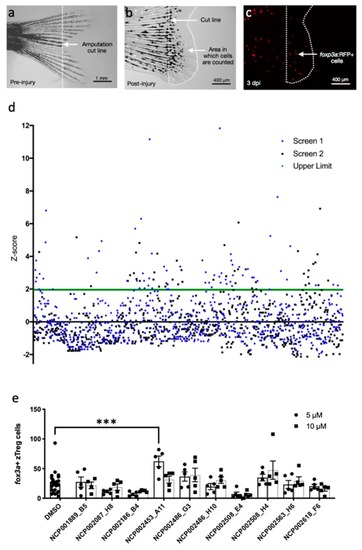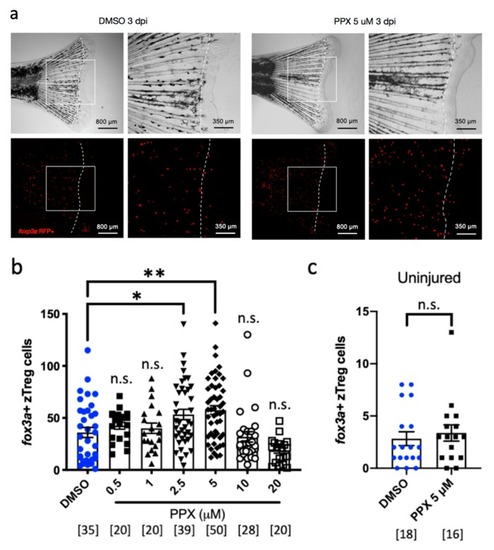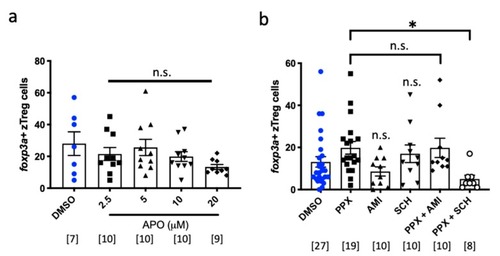- Title
-
Pharmacological Enhancement of Regeneration-Dependent Regulatory T Cell Recruitment in Zebrafish
- Authors
- Zwi, S.F., Choron, C., Zheng, D., Nguyen, D., Zhang, Y., Roshal, C., Kikuchi, K.
- Source
- Full text @ Int. J. Mol. Sci.
|
Chemical screen for modulators of zebrafish regulatory T cell (zTreg) recruitment in the regenerating tail. ( |
|
Pramipexole (PPX) enhances zebrafish regulatory T cell (zTreg) recruitment in regenerating tail tissue. ( |
|
Role of dopamine signaling in zebrafish regulatory T cell (zTreg) recruitment. ( |



